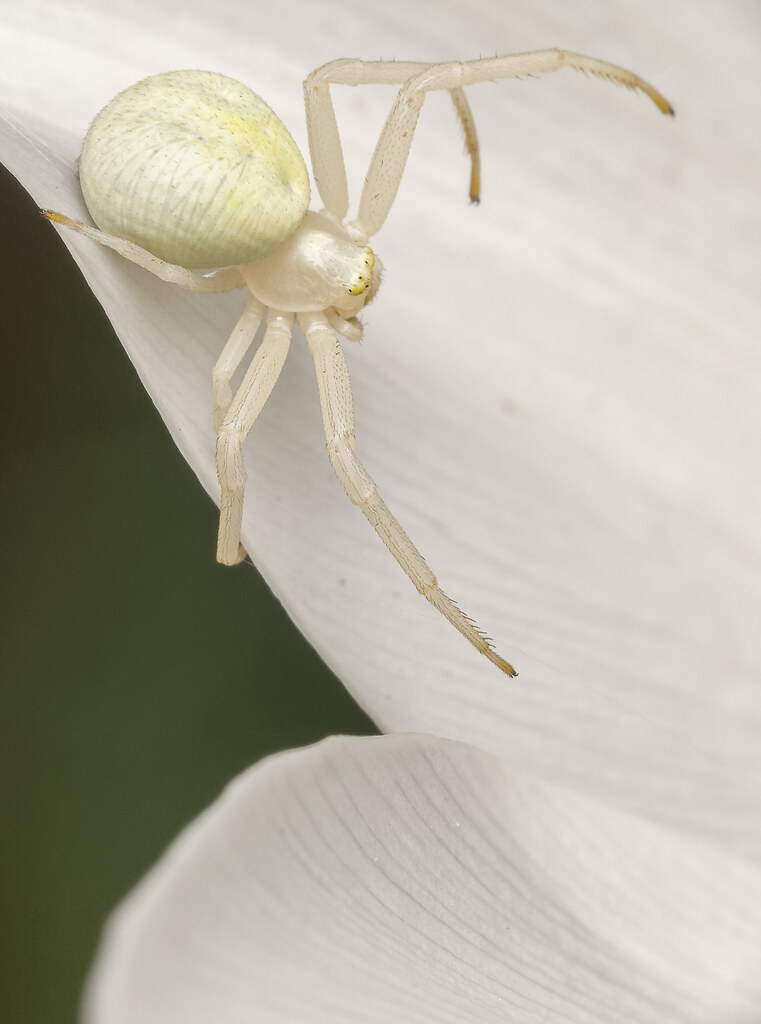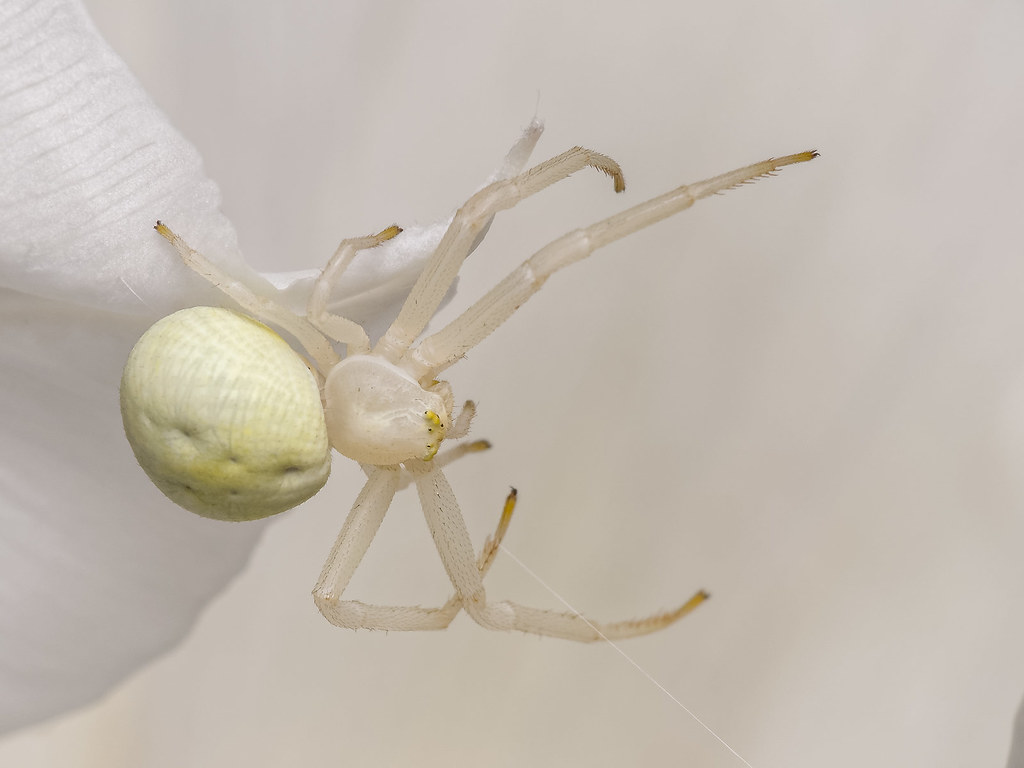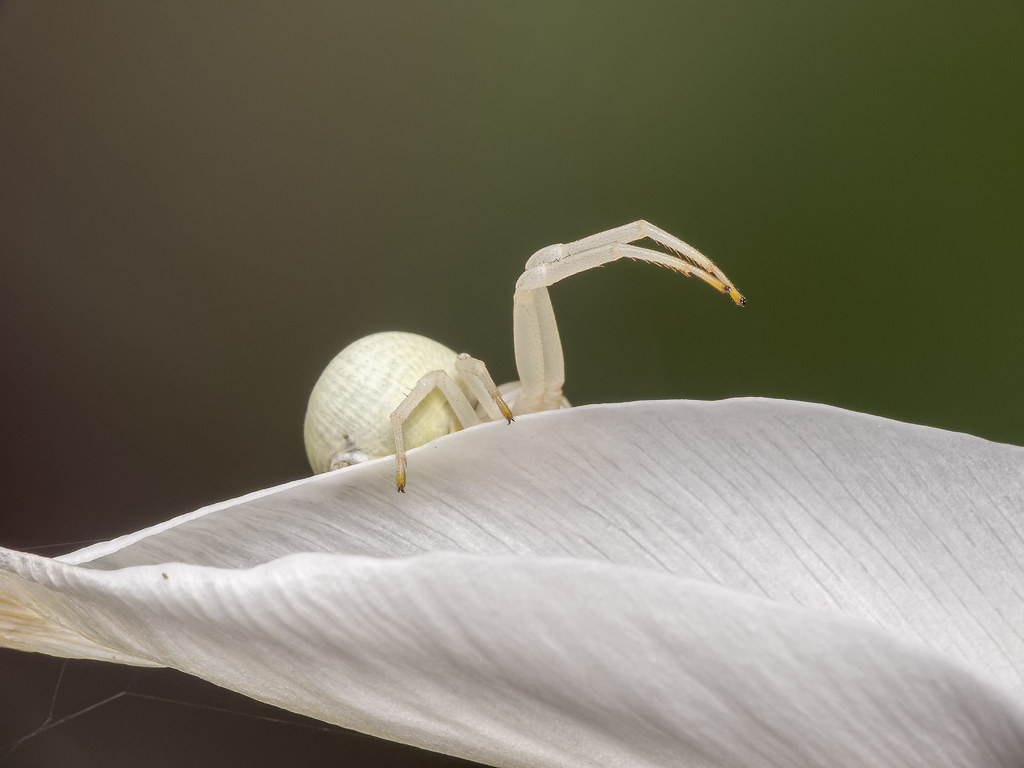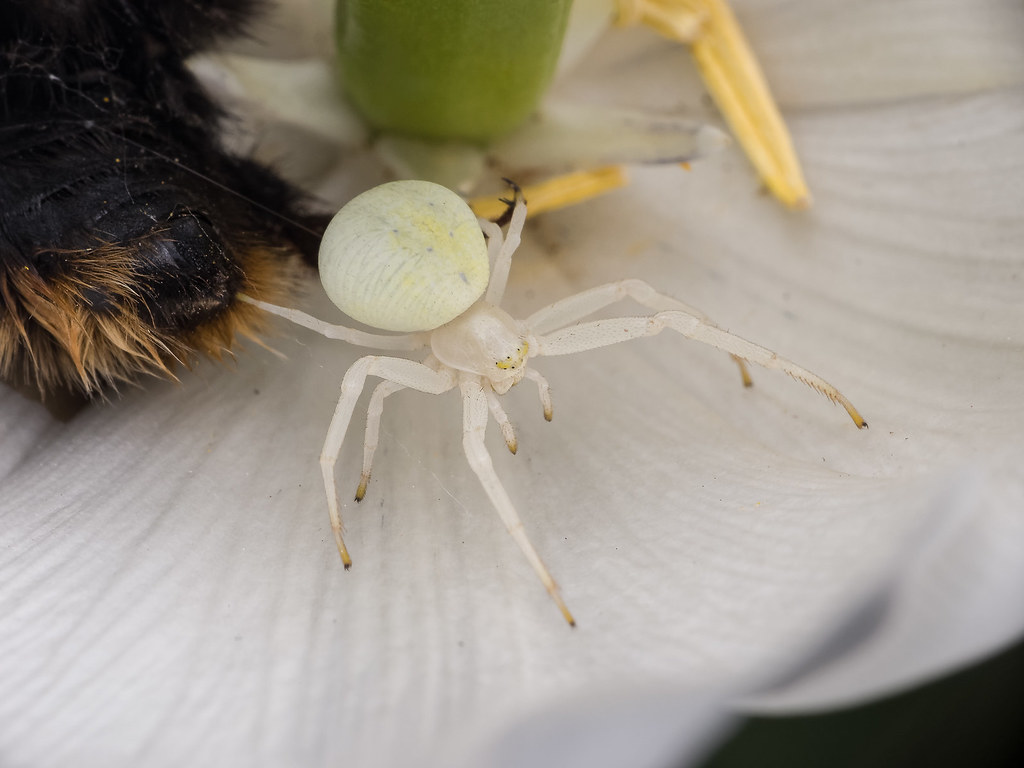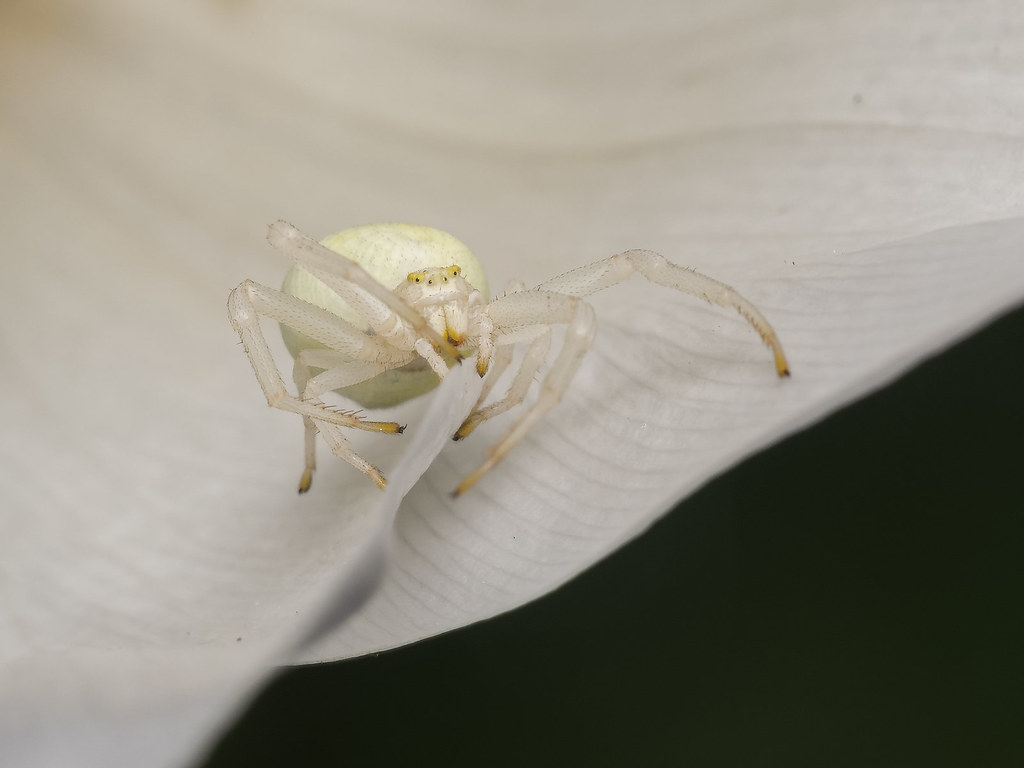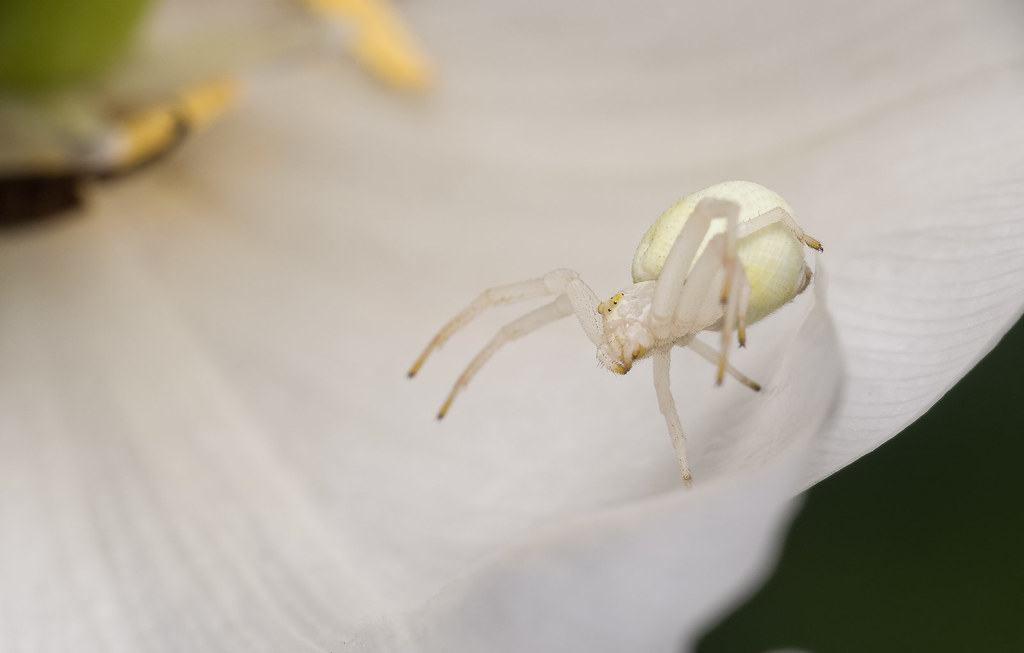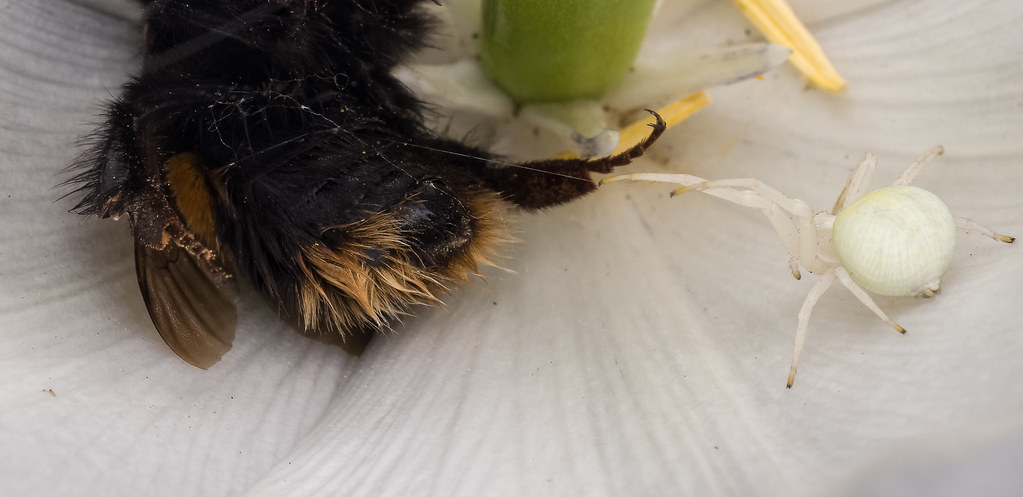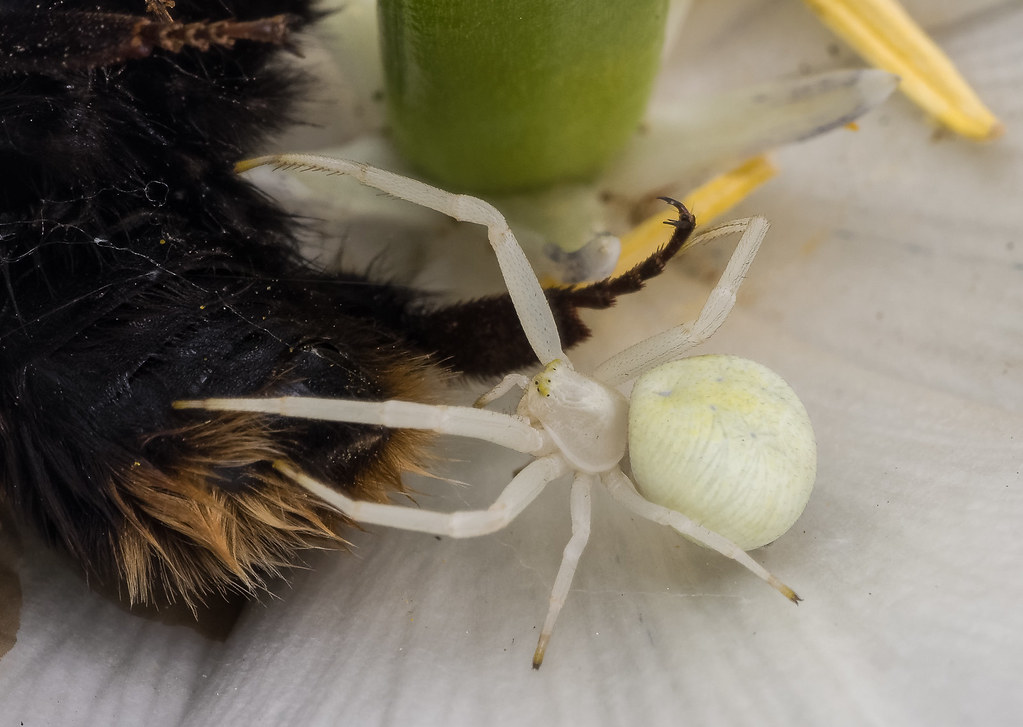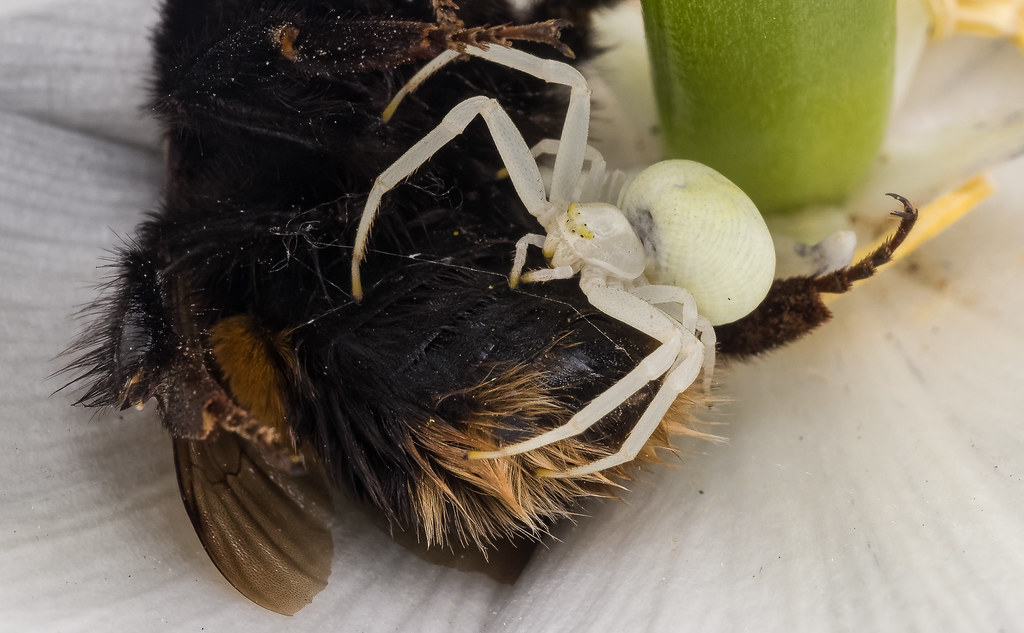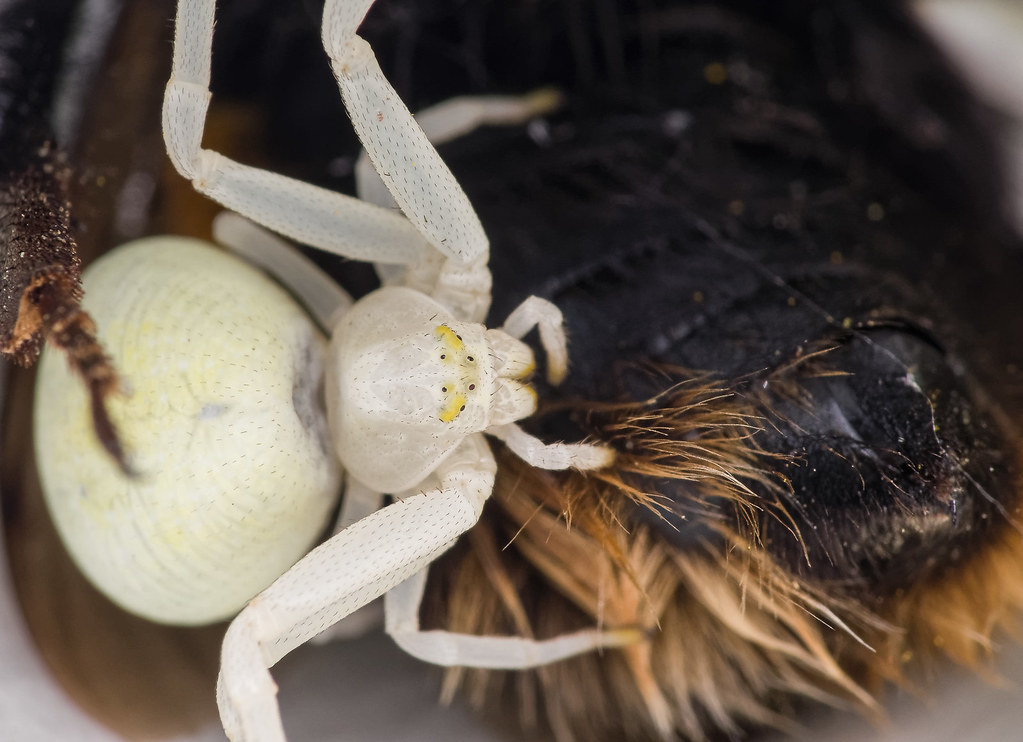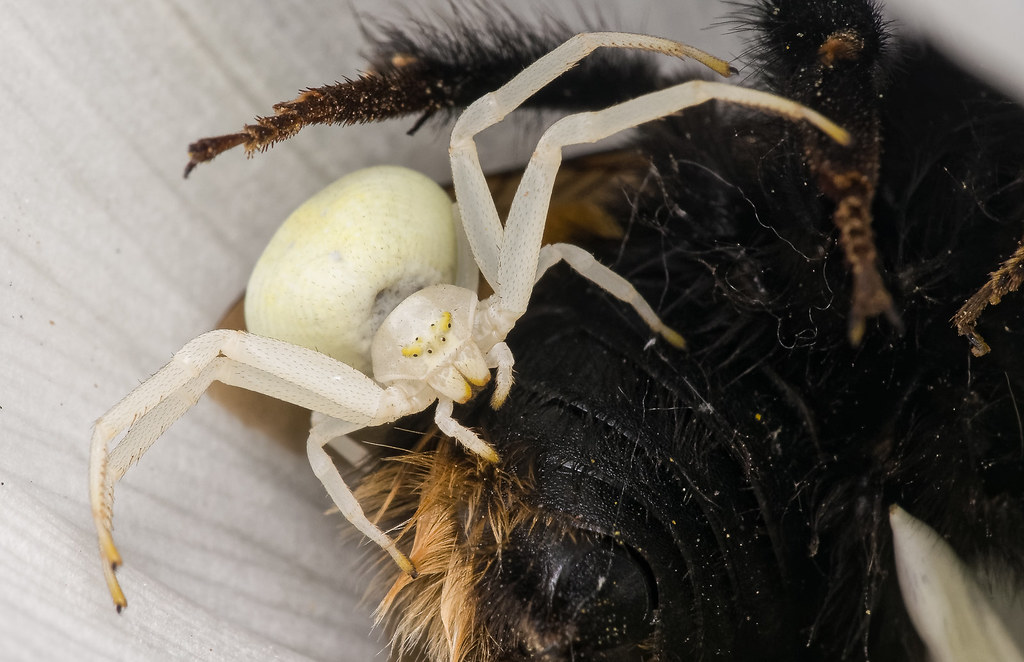GardenersHelper
In Memoriam
- Messages
- 6,344
- Name
- Nick
- Edit My Images
- Yes
These images, which I have only just processed, were captured in mid May last year during the course of an exceptionally busy photographic day. (I captured over 2000 images – all single captures btw, no bursts - images of invertebrates and flowers in the garden, the most I can recall capturing in any one day). These spider images were captured in three mini sessions of 10 – 15 minutes each, at around 9am, 2pm and 6:30pm.
The first image was captured during the third mini session using natural light with the Canon 70D and 55-250 STM lens, possibly using the Canon 500D close-up lens, but possibly just with the bare lens. This is shown out of order to provide some context for the other imges.
Apart from that, this post has images from the first mini session. The following post has images from the second mini session. The 3rd and 4th posts have images from the final (and most rewarding) session.
Apart from the first image, all the images were captured using my FZ200, probably with the Raynox 150 close-up lens. All used flash. I don't know which flash rig I used, but it was probably a single flash unit, mounted on the camera, with some version or other of my pie tin diffuser.
After selection in Lightroom the images were batch processed in DXO Optics Pro 10 and then individually processed in Lightroom.
There are 1300 pixel high versions of these images over at Flickr
Here is the context. There was a dead bee in the flower. This image may let you work out where the spider was for the other images.
1
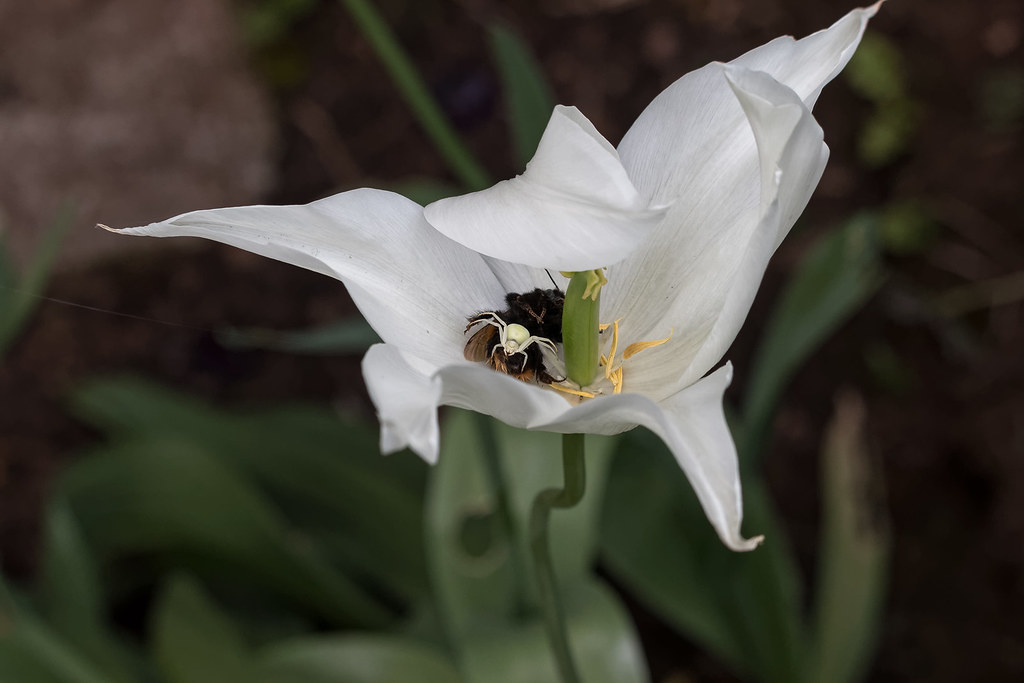
0819 027 2015_05_10 IMG_1898_DxO LR by gardenersassistant, on Flickr
First mini session, around 9am
I noticed this spider and tracked it as it wandered around the flower. I knew the bee was there (it had been in the way, spoiling some shots of the flower), but the spider didn't seem to be interested in it. Perhaps it didn't know it was there. Perhaps it was being cautious, scouting out the territory before attacking. Perhaps it wanted live prey not dead prey. I have no idea.
2
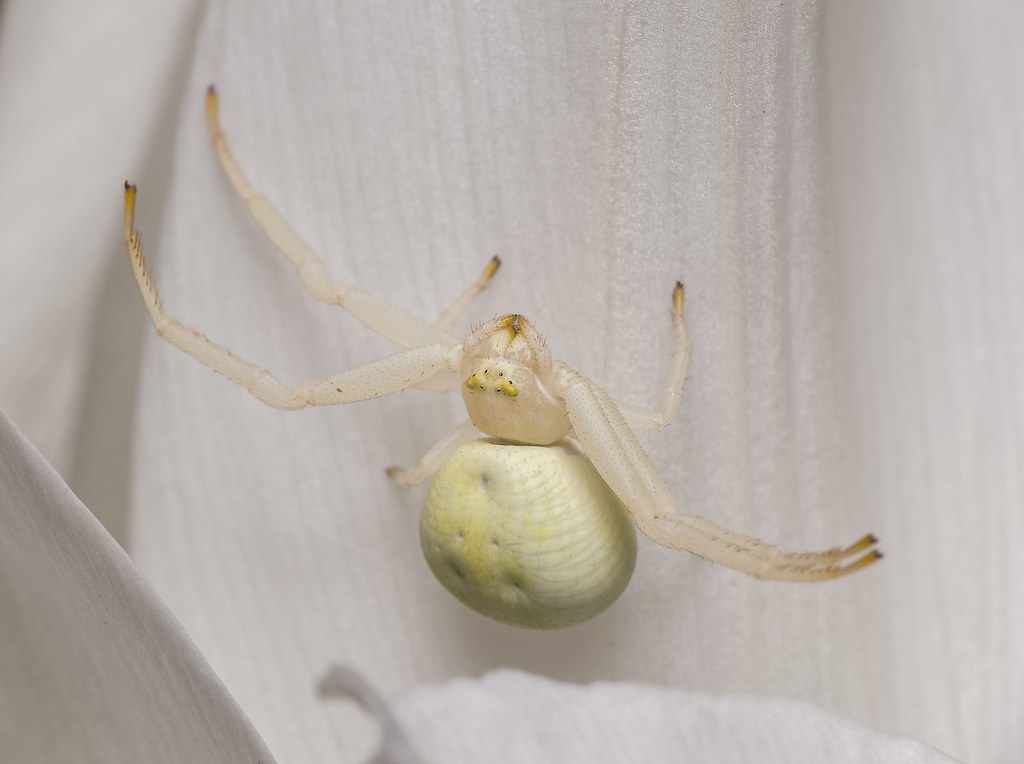
0819 032 2015_05_10 P1680511_DxO LR by gardenersassistant, on Flickr
3

0819 034 2015_05_10 P1680506_DxO LR by gardenersassistant, on Flickr
4
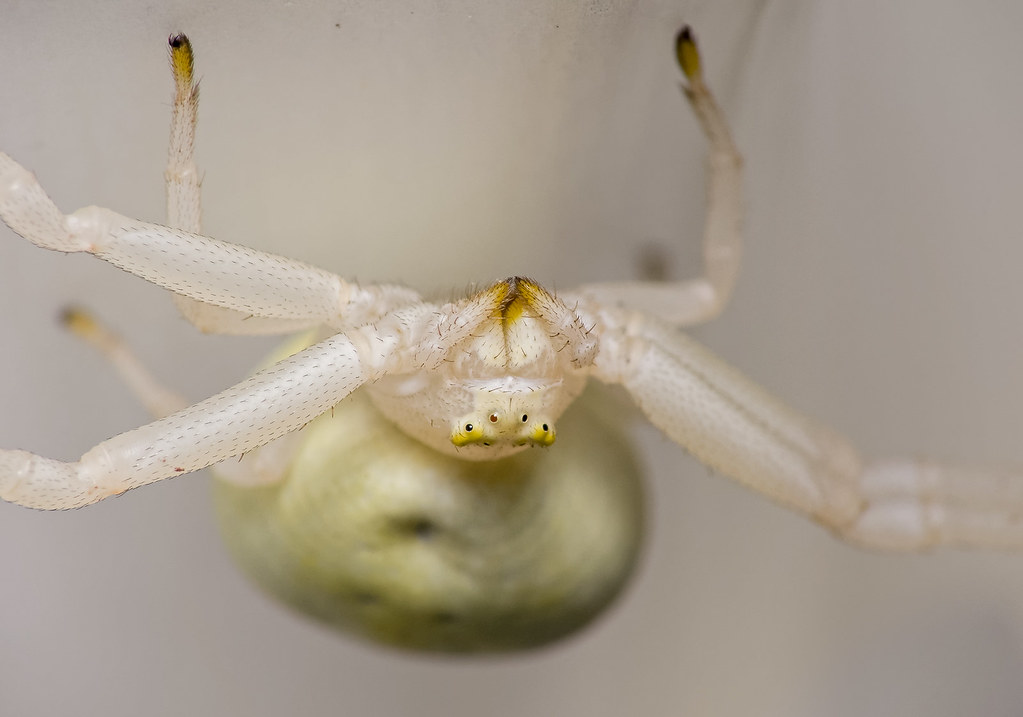
0819 035 2015_05_10 P1680522_DxO LR by gardenersassistant, on Flickr
5
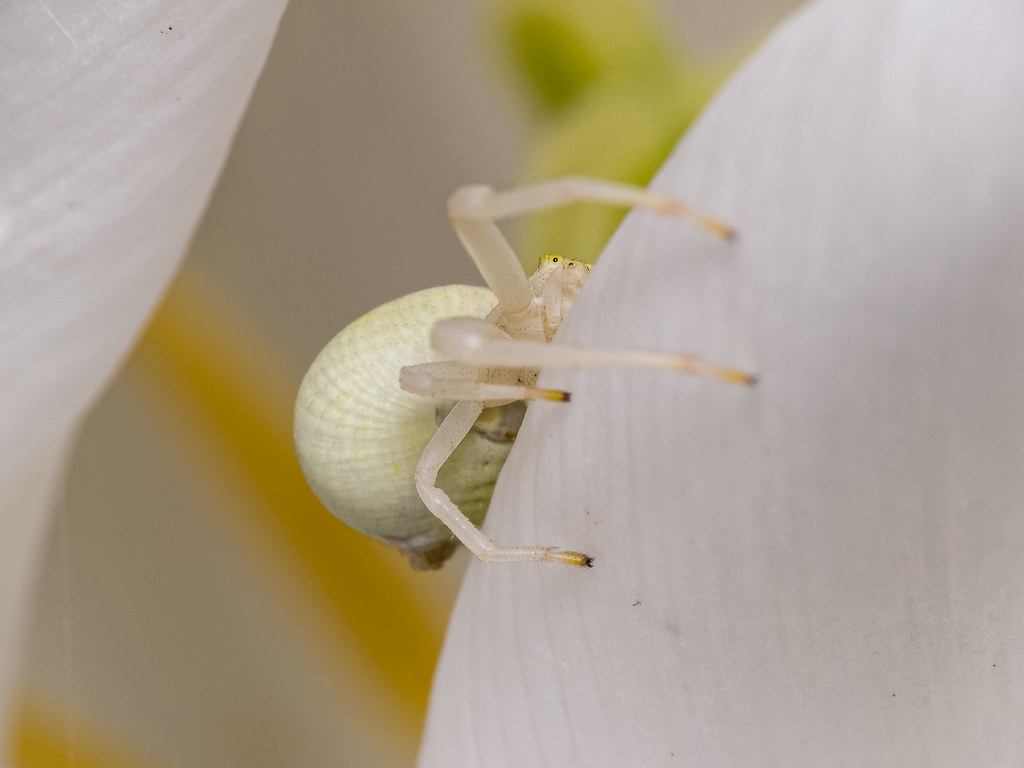
0819 036 2015_05_10 P1680524_DxO LR by gardenersassistant, on Flickr
6

0819 037 2015_05_10 P1680525_DxO LR by gardenersassistant, on Flickr
7
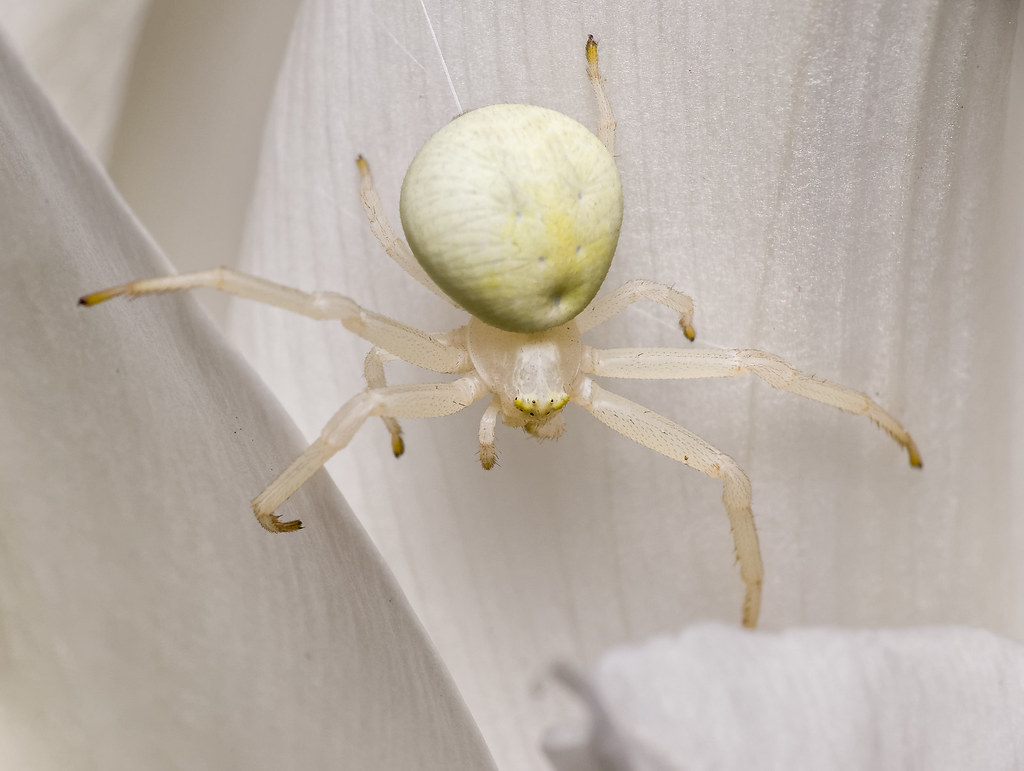
0819 040 2015_05_10 P1680527_DxO LR by gardenersassistant, on Flickr
8 I must have been getting bored by the lack of action at this point. I captured a photo of the bee and moved on to other subjects. I had no idea the other little insect was there.
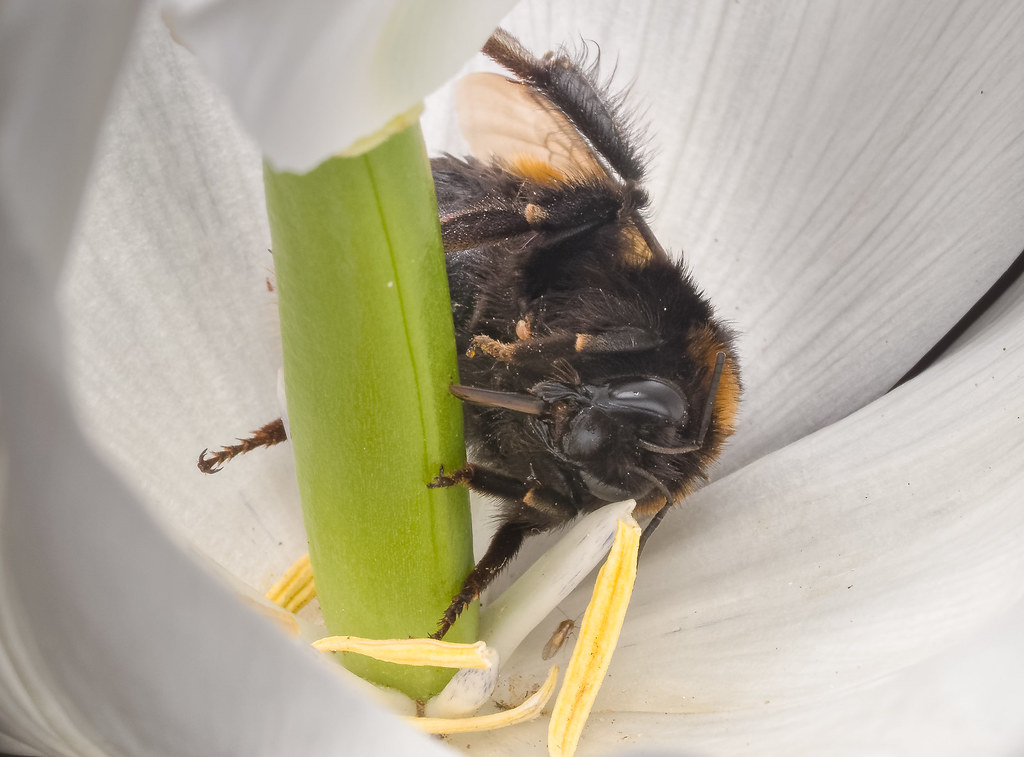
0819 042 2015_05_10 P1680553_DxO LR by gardenersassistant, on Flickr
Continued in next post ....
The first image was captured during the third mini session using natural light with the Canon 70D and 55-250 STM lens, possibly using the Canon 500D close-up lens, but possibly just with the bare lens. This is shown out of order to provide some context for the other imges.
Apart from that, this post has images from the first mini session. The following post has images from the second mini session. The 3rd and 4th posts have images from the final (and most rewarding) session.
Apart from the first image, all the images were captured using my FZ200, probably with the Raynox 150 close-up lens. All used flash. I don't know which flash rig I used, but it was probably a single flash unit, mounted on the camera, with some version or other of my pie tin diffuser.
After selection in Lightroom the images were batch processed in DXO Optics Pro 10 and then individually processed in Lightroom.
There are 1300 pixel high versions of these images over at Flickr
______________________________________________________________________________________
Here is the context. There was a dead bee in the flower. This image may let you work out where the spider was for the other images.
1

0819 027 2015_05_10 IMG_1898_DxO LR by gardenersassistant, on Flickr
First mini session, around 9am
I noticed this spider and tracked it as it wandered around the flower. I knew the bee was there (it had been in the way, spoiling some shots of the flower), but the spider didn't seem to be interested in it. Perhaps it didn't know it was there. Perhaps it was being cautious, scouting out the territory before attacking. Perhaps it wanted live prey not dead prey. I have no idea.
2

0819 032 2015_05_10 P1680511_DxO LR by gardenersassistant, on Flickr
3

0819 034 2015_05_10 P1680506_DxO LR by gardenersassistant, on Flickr
4

0819 035 2015_05_10 P1680522_DxO LR by gardenersassistant, on Flickr
5

0819 036 2015_05_10 P1680524_DxO LR by gardenersassistant, on Flickr
6

0819 037 2015_05_10 P1680525_DxO LR by gardenersassistant, on Flickr
7

0819 040 2015_05_10 P1680527_DxO LR by gardenersassistant, on Flickr
8 I must have been getting bored by the lack of action at this point. I captured a photo of the bee and moved on to other subjects. I had no idea the other little insect was there.

0819 042 2015_05_10 P1680553_DxO LR by gardenersassistant, on Flickr
Continued in next post ....

